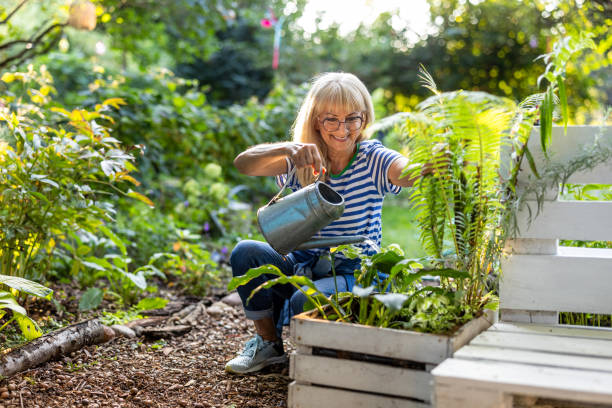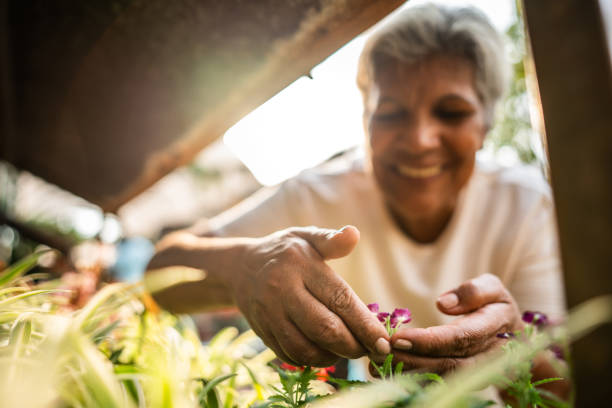Gardening is more than a hobby—it’s a source of peace, physical activity, and mental well-being. For seniors, the act of tending to plants offers a powerful connection to nature and purpose. Whether it’s growing herbs on a windowsill or tending to a flower bed in the backyard, gardening projects can be tailored to match mobility, strength, and individual interests.
This article explores easy and fulfilling garden projects that bring beauty, sensory delight, and a sense of accomplishment to older adults.
The Benefits of Gardening for Seniors
Before diving into project ideas, it’s important to understand why gardening is particularly beneficial for seniors. Gardening is a low-impact activity that improves flexibility, strengthens muscles, and boosts cardiovascular health. It also reduces stress, anxiety, and symptoms of depression—providing therapeutic value without the need for intense physical exertion.
In addition to its health perks, gardening fosters creativity, encourages routine, and instills a sense of responsibility and care. Whether living independently or in assisted living, seniors can enjoy a rich, rewarding experience through simple garden activities.
Raised Garden Beds for Accessibility
One of the easiest ways to make gardening more comfortable and accessible is by using raised garden beds. These elevated structures eliminate the need for bending or kneeling, which can be challenging for seniors with arthritis or limited mobility.
Raised beds can be used to grow vegetables, herbs, and flowers. Many are designed at waist height, ideal for those who use walkers or wheelchairs. Prefabricated kits or DIY wooden frames can be customized to suit space and aesthetic preferences.
To make the most of a raised garden bed, seniors can start with easy-to-grow plants like lettuce, cherry tomatoes, or basil—offering quick, satisfying results.
Container Gardening on Patios and Balconies
For seniors with limited outdoor space, container gardening provides an ideal solution. Using pots, troughs, or hanging baskets, one can cultivate vibrant plants right on a patio, porch, or balcony.
Container gardens are highly customizable. Seniors can mix colors, scents, and textures to create visually pleasing arrangements. Consider pairing lavender, marigolds, and petunias for a fragrant and colorful display.
Additionally, lightweight plastic or resin containers are easier to handle than traditional clay pots. Self-watering containers or drip irrigation systems can simplify upkeep, making it even more accessible for those with physical limitations.
Vertical Gardening for Small Spaces
Vertical gardening is a clever way to maximize space while minimizing strain. Trellises, wall-mounted planters, and tiered stands allow seniors to garden at eye level and bring greenery to otherwise unused vertical surfaces.
This approach is perfect for growing trailing plants, climbing vines, or herbs. Strawberries, snap peas, and morning glories flourish in vertical setups. Many ready-made vertical planters come with multiple pockets or shelves, reducing the need to constantly bend down or reach too far.
Vertical gardens also add beauty to fences, balconies, or interior walls, transforming them into lush, vibrant features with minimal maintenance.
Herb Gardens for the Kitchen or Window
A small indoor herb garden is one of the most satisfying gardening projects, especially for seniors who enjoy cooking or aromatherapy. Herbs such as parsley, mint, oregano, thyme, and rosemary are low-maintenance and thrive in sunny kitchen windows.
Tabletop herb kits are widely available and often come with everything needed to get started, including seeds, soil, and pots. For those who prefer instant gratification, nursery-grown herb seedlings can be purchased and transferred into decorative containers.
An herb garden not only adds greenery to the home but also provides fresh flavor for meals and fragrant scents that uplift the mood.
Butterfly and Pollinator Gardens

Encouraging wildlife into the garden brings nature closer to home. Creating a butterfly or pollinator garden is a rewarding project that fosters ecological awareness and enjoyment.
To start, choose plants that attract butterflies, bees, and hummingbirds. Coneflowers, milkweed, bee balm, and black-eyed Susans are all excellent choices. Grouping flowers by color and type increases the chances of attracting winged visitors.
This type of garden can be as simple as a few planters or as elaborate as a backyard bed. For added engagement, seniors can keep a journal or photo log of the creatures that visit their plants.
Sensory Gardens for Therapeutic Enjoyment
Sensory gardens are designed to engage sight, smell, touch, and even sound. These gardens can be deeply therapeutic for seniors, especially those with dementia or sensory processing challenges.
Choose plants with strong scents like lavender, lemon balm, and rosemary. Add textured plants such as lamb’s ear or ornamental grasses that sway gently in the breeze. Wind chimes, bird feeders, and water features enhance the multi-sensory experience.
Benches, shade, and clear paths make the space more inviting and accessible for resting or socializing.
Gardening as a Social Activity
While gardening can be a solitary pastime, it also offers opportunities for social connection. Seniors can join community garden programs, start a gardening club at a retirement center, or invite grandchildren to plant seeds together.
Shared garden spaces help build friendships, foster intergenerational bonding, and encourage teamwork. These social interactions are critical for emotional well-being and combating loneliness in older adults.
Final Thoughts
Gardening is a timeless, enriching activity that adapts beautifully to the abilities and preferences of seniors. With a little planning, the right tools, and accessible design, older adults can enjoy the countless physical, emotional, and cognitive benefits gardening offers.
Whether it’s a blooming patio container, a flourishing herb pot, or a garden visited by butterflies, these simple projects bring lasting joy—and remind us all of the beauty of tending to life.


Recent Comments